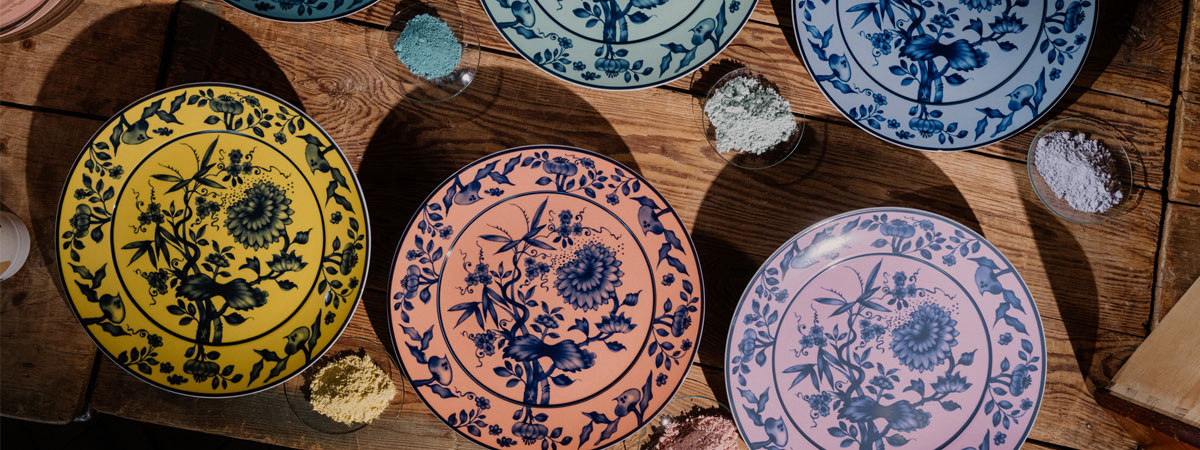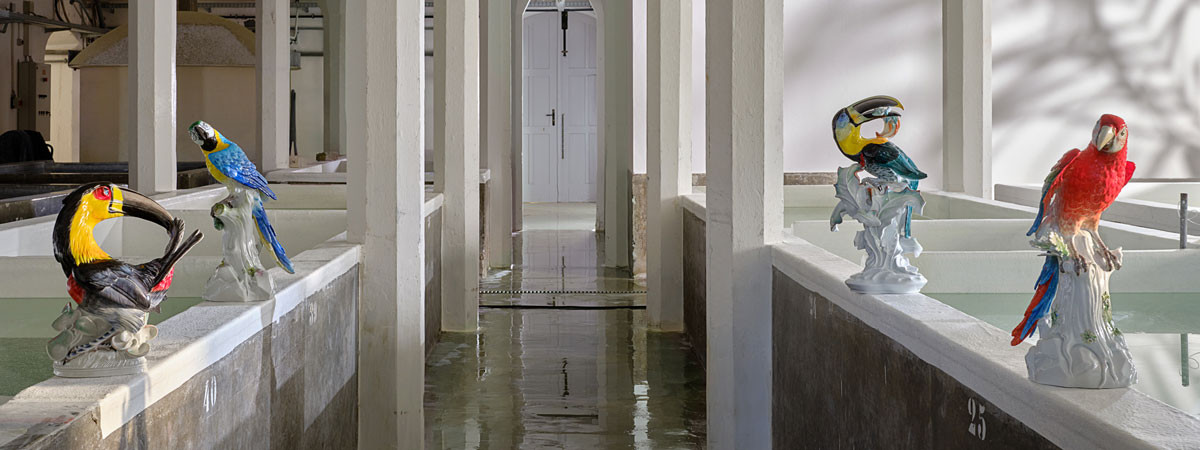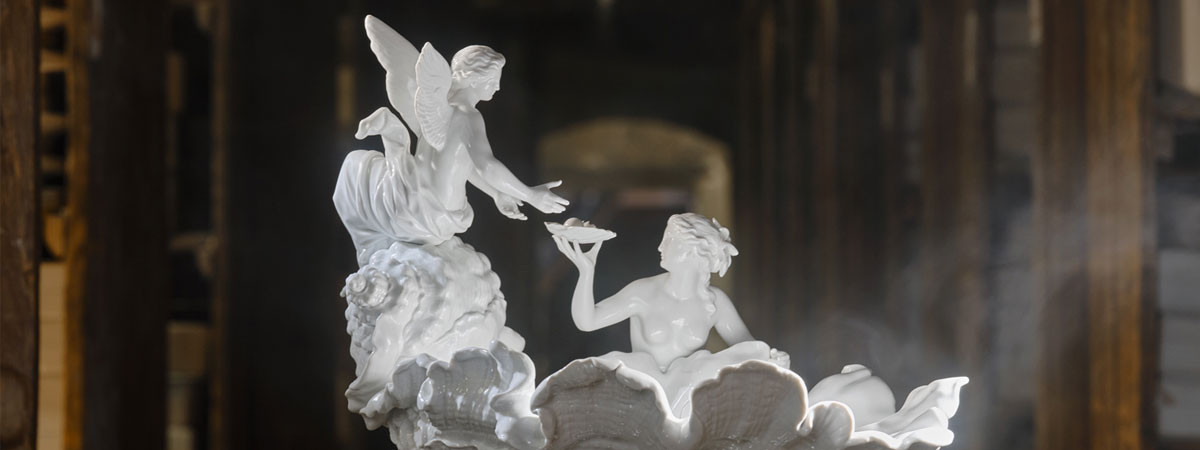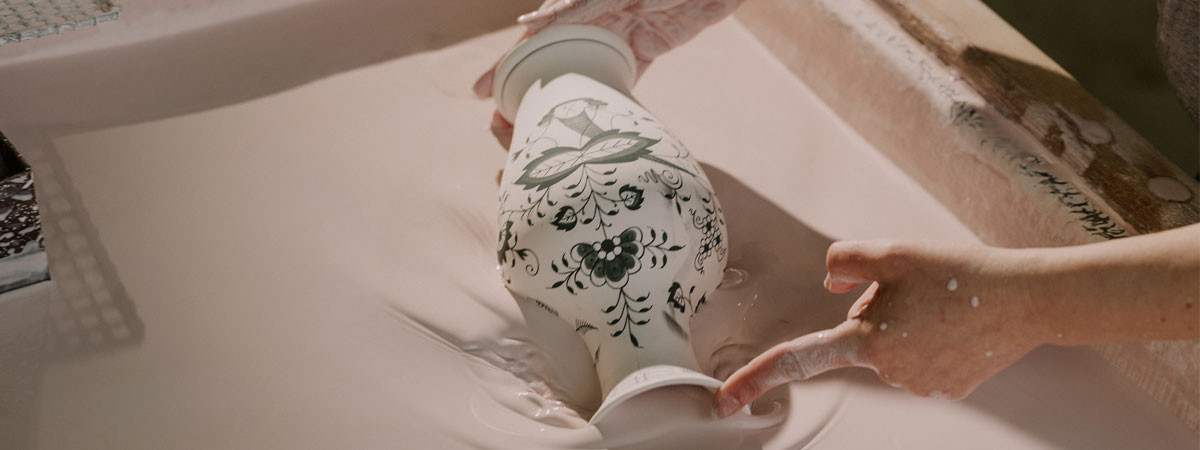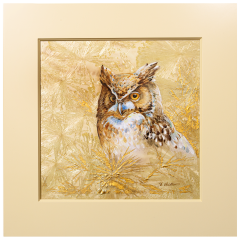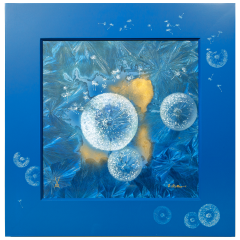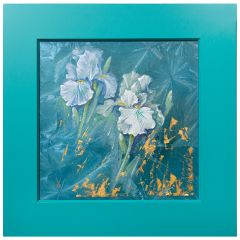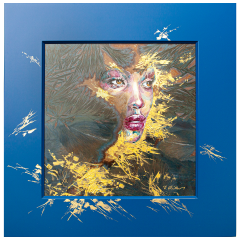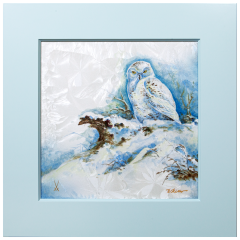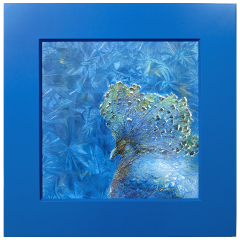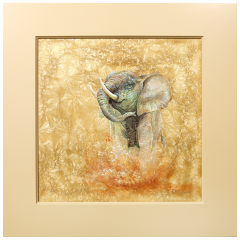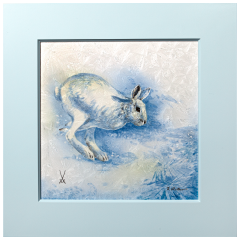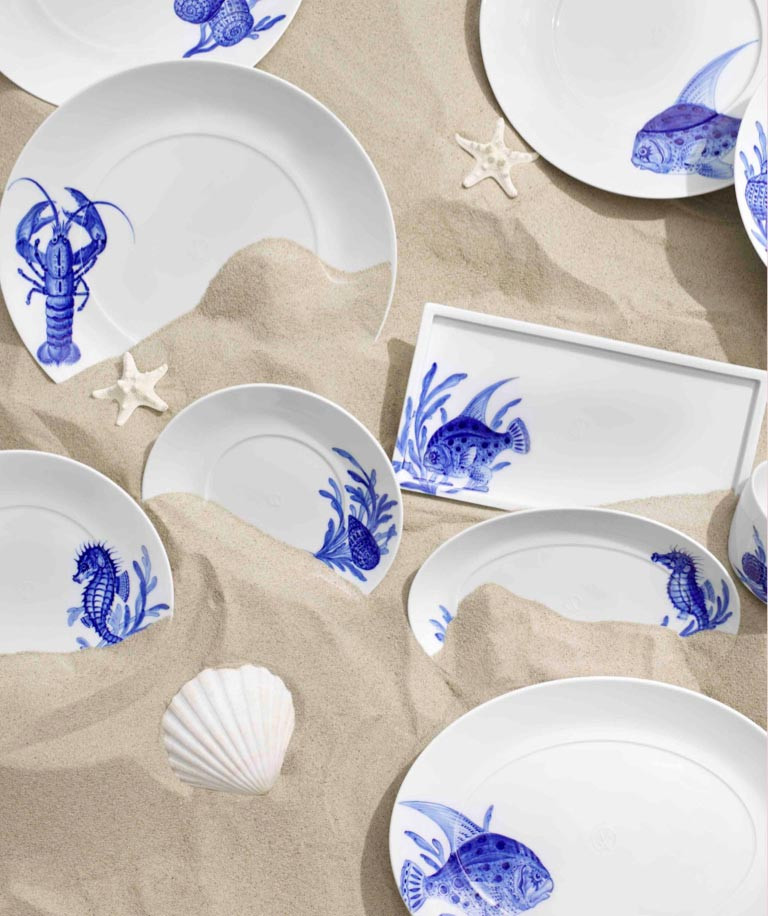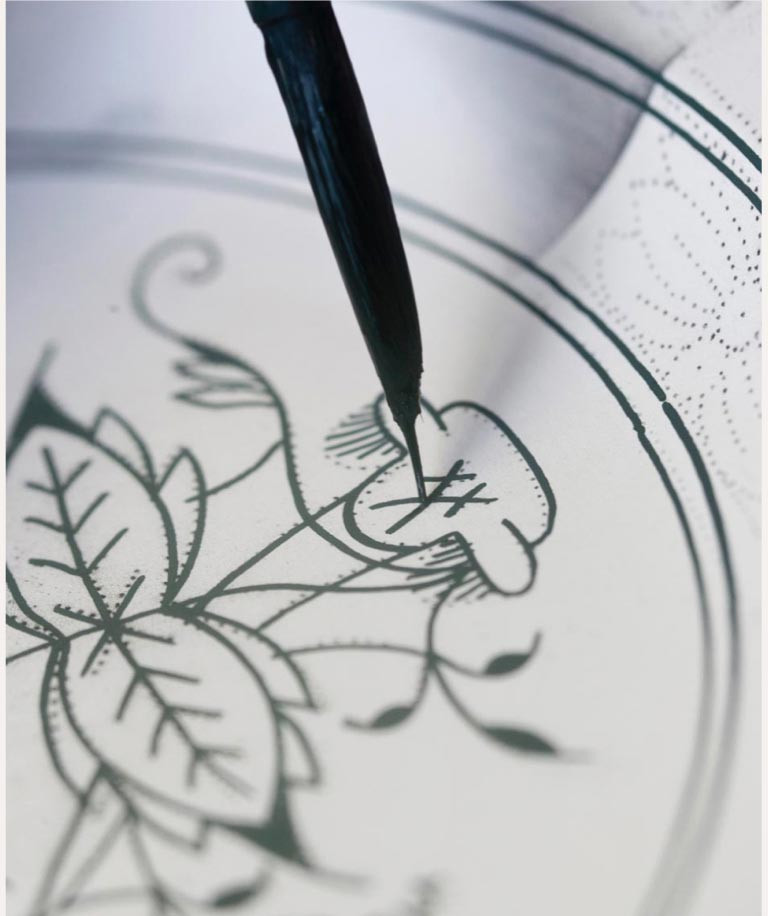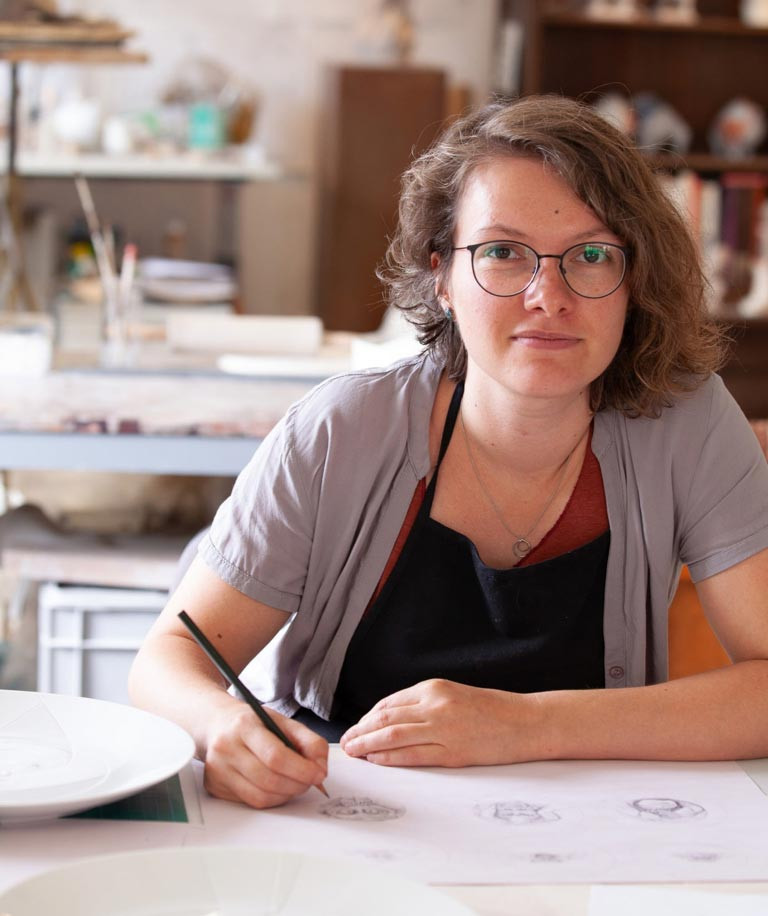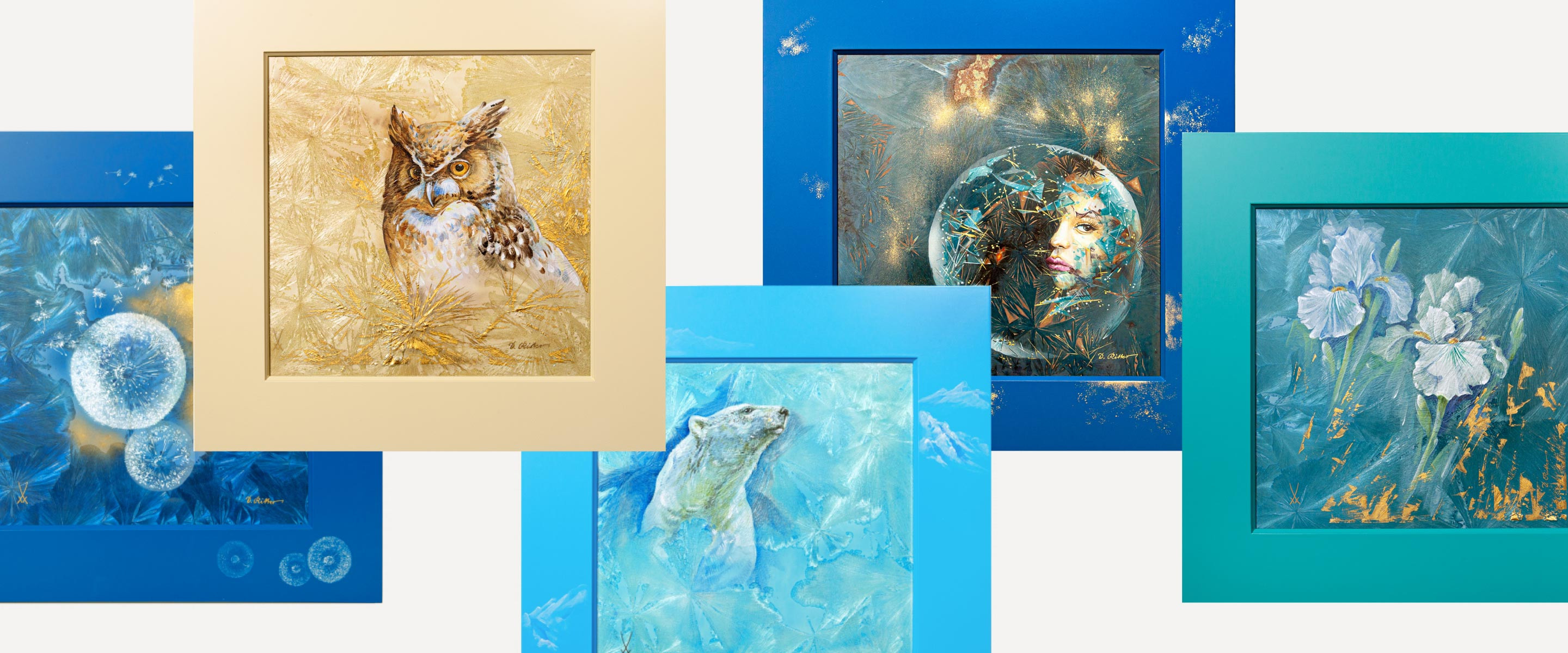
Crystal worlds - Perfection of a globally unique, majestically exclusive order
-
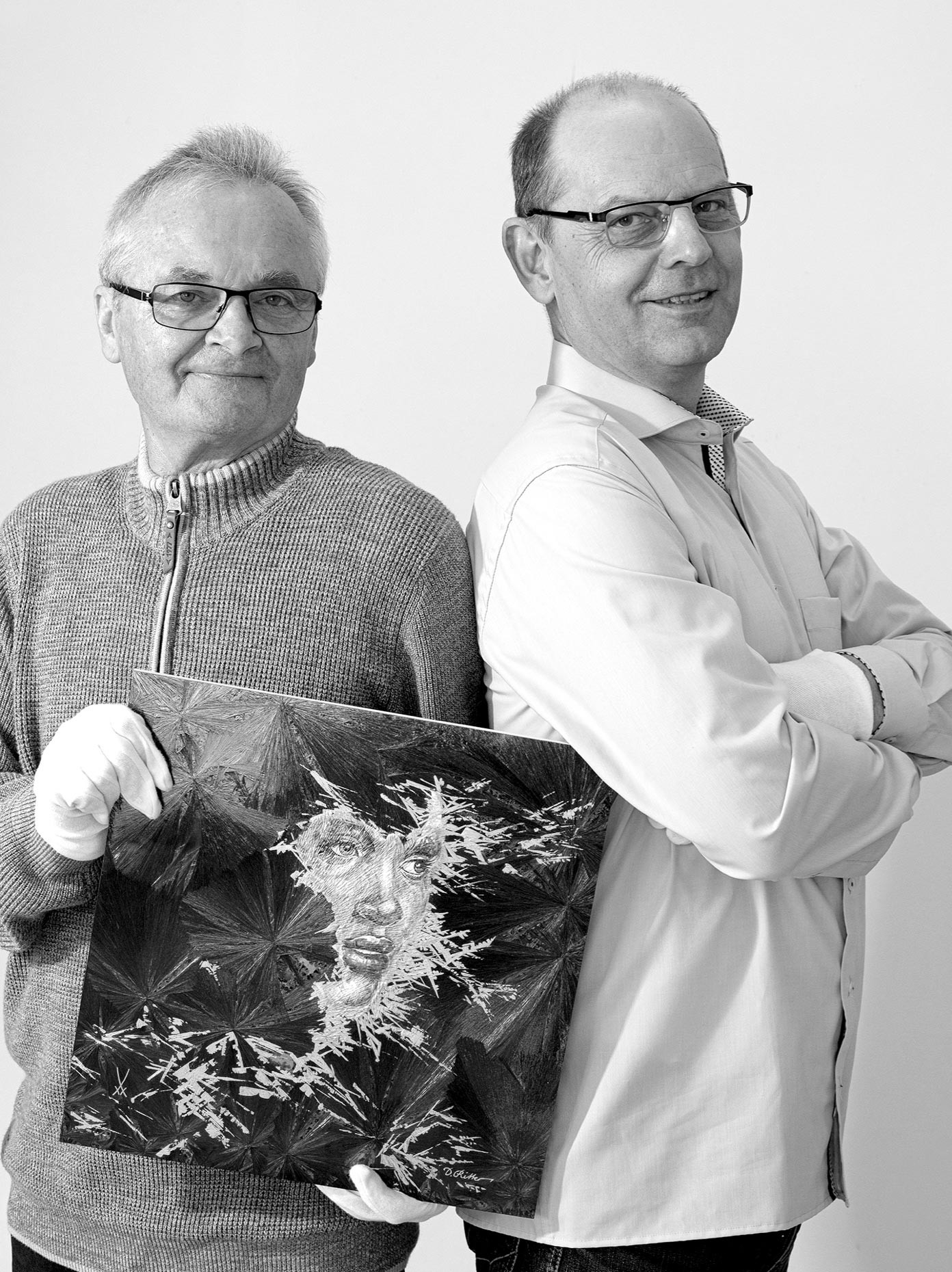 It was a passion for experimentation that brought the two Meissen artists Horst Gottschaldt (born 1949) and Detlef Ritter (born 1961) together. Their tenacity, love of the material and belief in each other have now helped them create new crystal worlds for the Manufactory. The upshot: a sensational symbiosis of technical crystalline glazes and meticulously executed porcelain painting whose captivating effects materialised following months of testing in the laboratory. Only very few craftspeople are equipped for such a demanding challenge, one that is frequently beset by failure. The artist Horst Gottschaldt used porcelain plaques as a working surface to which he applied pasty mixtures of various porcelain ingredients, mineralogical oxides and carbonates. The ingredients are mixed to differing formulae as a function of the colour it is hoped to create. With the shape, size and variety of the crystals formed being wholly unpredictable, the outcome of a lengthy period of dedicated firing at up to approx. 1,300°C is only known once the kiln door is opened. In the present case, the crystals have turned out to be of a very large, unique kind, yielding an amorphous visual design with no set order or structure.
It was a passion for experimentation that brought the two Meissen artists Horst Gottschaldt (born 1949) and Detlef Ritter (born 1961) together. Their tenacity, love of the material and belief in each other have now helped them create new crystal worlds for the Manufactory. The upshot: a sensational symbiosis of technical crystalline glazes and meticulously executed porcelain painting whose captivating effects materialised following months of testing in the laboratory. Only very few craftspeople are equipped for such a demanding challenge, one that is frequently beset by failure. The artist Horst Gottschaldt used porcelain plaques as a working surface to which he applied pasty mixtures of various porcelain ingredients, mineralogical oxides and carbonates. The ingredients are mixed to differing formulae as a function of the colour it is hoped to create. With the shape, size and variety of the crystals formed being wholly unpredictable, the outcome of a lengthy period of dedicated firing at up to approx. 1,300°C is only known once the kiln door is opened. In the present case, the crystals have turned out to be of a very large, unique kind, yielding an amorphous visual design with no set order or structure.
"Crystal glazes epitomize an aesthetic of imperfection, whose appeal lies in its ability to reflect the light, its evocative nature and its spectral depth."
-
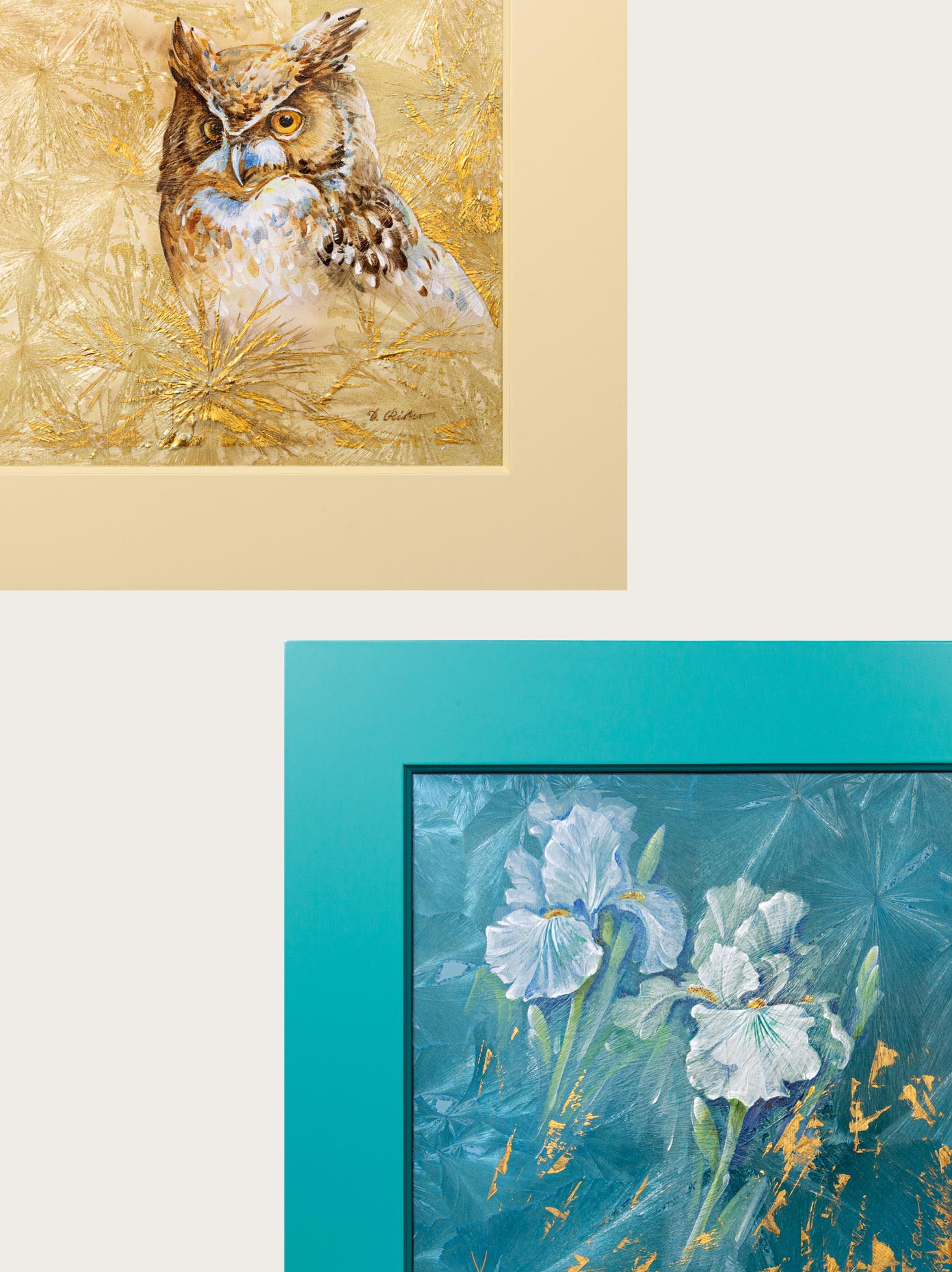 The Meissen art porcelain painter Detlef Ritter then applied his own decorative motifs to the crystal-coated plaques in a creative free-hand style. Marshalling colours by brush over the rough crystalline surface is a supremely skilful form of painting by hand that requires years of experience in the various techniques involved. Ritter followed the flow of the crystalline glaze throughout – and in this way spawned 12 magical wall plaques, each full of its own unique fascinating effects, that open up a new world of porcelain art to us. Works of art of this kind are a hallowed tradition amongst artists at Europe’s premium porcelain manufactory. First adopted in the late 19th century, in the 1920s and 1930s the glazing technique was given an art deco workover by Meissen porcelain painter Emil Paul Börner. The modeller Ludwig Zepner invested great effort into reviving such crystalline glazes in the mid-1990s, turning them into spectacular one-offs on his modern shapes of ware. And now, an age-old technique refined over several generations has been brought sumptuously up to date in concert with the traditional hand-painted decoration for which Meissen is so famous.
The Meissen art porcelain painter Detlef Ritter then applied his own decorative motifs to the crystal-coated plaques in a creative free-hand style. Marshalling colours by brush over the rough crystalline surface is a supremely skilful form of painting by hand that requires years of experience in the various techniques involved. Ritter followed the flow of the crystalline glaze throughout – and in this way spawned 12 magical wall plaques, each full of its own unique fascinating effects, that open up a new world of porcelain art to us. Works of art of this kind are a hallowed tradition amongst artists at Europe’s premium porcelain manufactory. First adopted in the late 19th century, in the 1920s and 1930s the glazing technique was given an art deco workover by Meissen porcelain painter Emil Paul Börner. The modeller Ludwig Zepner invested great effort into reviving such crystalline glazes in the mid-1990s, turning them into spectacular one-offs on his modern shapes of ware. And now, an age-old technique refined over several generations has been brought sumptuously up to date in concert with the traditional hand-painted decoration for which Meissen is so famous.


